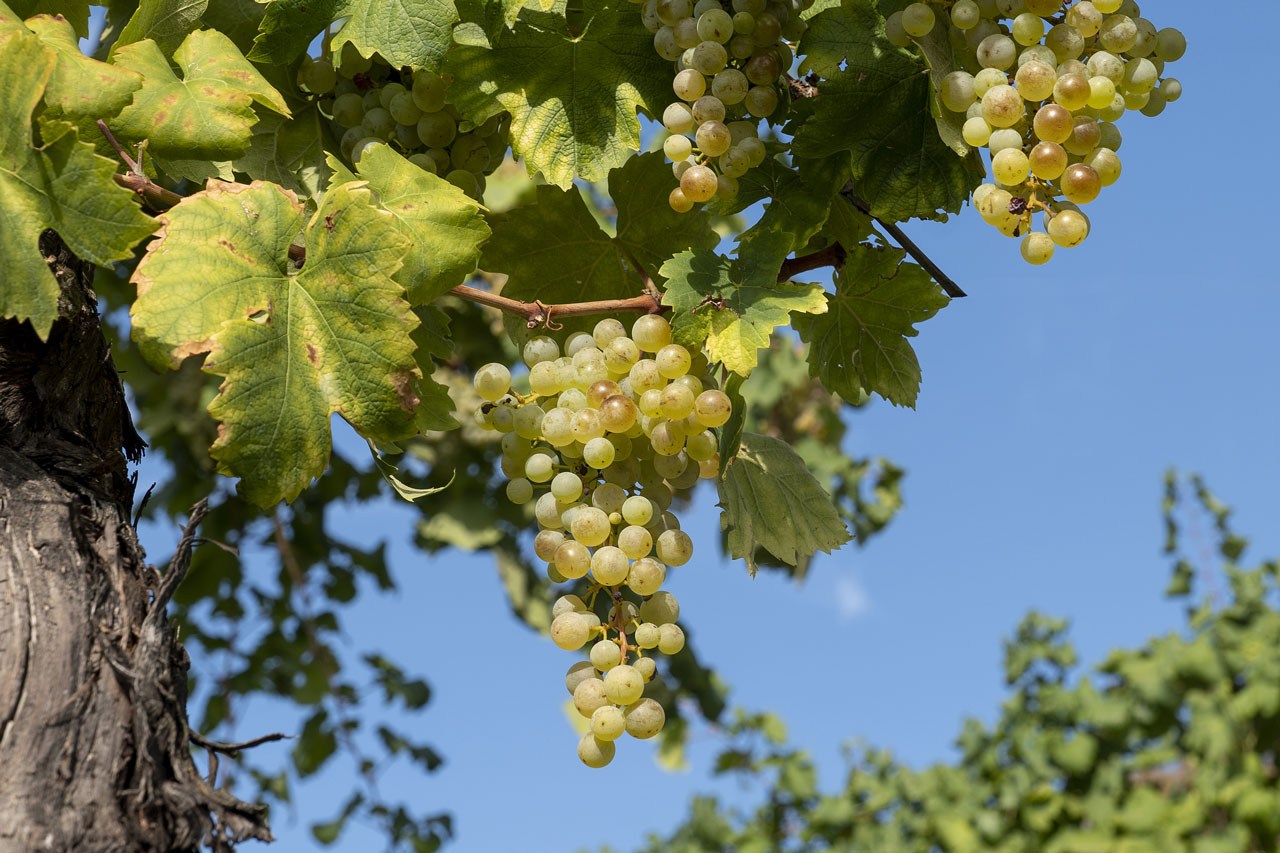


The 2020 vintage is characterized by a mild winter followed by a cold spring that led to a delay in bud break. From late April and May, the sudden rise in temperature led to rapid vine growth. August was finally hot and dry, leading to a surprisingly normal harvest compared to the initial delay. The wine is well-structured, pleasant, with a pronounced prevalence of fruit over floral notes. Good vintage.

2019 begins with a initially mild and sunny autumn, allowing us to carry out the first soil work. From October 26th to 30th however, the arrival of big storm named Vaia poured 718 mm of water on the ground in three days. The wind on Mount Cesen reached 192 km/h, on the Rolle pass 217 km/h. 42,500 hectares of forest are felled, Venice is flooded by 152 cm, the Piave river also overflows in Segusino. Since then, rain and snow are no longer seen for almost the entire winter, the land is dry, the mountain is yellow, burnt orange by the sun. The spring is also dry until April 26th when a disturbance arrives, and there is a strong hailstorm in the eastern part of Valdobbiadene. Fortunately, Ca’ dei Zago Mariarosa and Bastia are intact. Then, dry weather returns throughout the summer. Strange climate, with significant thermal and water fluctuations throughout the year. We reduce macerations to 1-2 days; the wine gains verticality, aromaticity, the fruity character is supported by a pleasant Mediterranean spice, intriguing. Not an easy vintage, but a wine of great personality.

The 2018 vintage is characterized by good productivity generosity, thanks to the mild spring that ensured excellent flowering. Freshness is somewhat compromised, due to the very hot and dry summer. In Valdobbiadene, as in the Dolomites, the winter was dry, almost snowless. The wine revealed itself over time, initially austere. Warm vintage.

Hot year, which began with a spring frost that caused various damage to vineyards in the plains, fortunately not in our hills.
Still hot spring and summer with very little rain.
Due to excess heat in this vintage, no Metodo Classico was produced.

The 2016 vintage was cool, characterized by a mild winter followed by a sudden rise in temperatures in April, followed by abundant precipitation in May and June. August finally was hot and dry, allowing a good harvest. A productive vintage, misinterpreted by us.

After the disastrous previous vintage, the plants exploded with great vigor in spring, and the phenological phases followed smoothly until harvest. Beautiful grapes perfectly ripened. In the cellar, white vinification, no maceration. Technical wine, precise, bordering on perfection at the expense of emotion. Last vintage. Great vintage.

The 2014 season started very well with a sunny spring and the right water regime. The illusion then ended as the summer months continued, replacing the characteristic elements of light and heat with the unusual rain and humidity. For this we had to work hard with leafing, cleaning the clusters to ensure good ventilation.
It never stopped raining throughout the summer, and the grapes struggled to ripen.
No Metodo Classico was produced in this vintage.
Terrible vintage.

Given the little experience, the very rainy spring puts us in difficulty in managing Plasmopara viticola. We manage somehow to confine the damage, and fortunately, the summer is torrid and dry. The remaining grapes ripen well, excellent analytical data, and we start harvesting on September 17th. Wine described as authoritative, gentle, and elegant in taste, fresh and delicate in smell. Excellent vintage.

A hot, dry vintage. In the vineyard, we neither mowed the grass nor performed the topping of the shoots. Plants suffered greatly, and we understood the importance and difference in resistance of rootstocks to drought. Warm wine, flat, fortunately mineral finish, absent acidity. Smell and aftertaste of ripe fruit. Hot and dry vintage.

Excellent spring with normal succession of seasons until hail arrives on June 8th, during the pre-flowering phase, many buds and part of the clusters split, but the plants recover strength, and we reach September with little but excellent grapes. Good vintage.

The first official vintage of Christian and Marika, a change in vinification is introduced with the harvest in small crates and sorting table, aiming for maximum attention to grape work. The vintage is beautiful with well-distributed rains throughout the year. No hail. A vintage that has great longevity over the years. Great vintage.
The Bastia vineyard is located above the ridge that separates the hamlet of San Pietro di Barbozza from the Saccol area, and borders in its eastern part with the Cartizze zone. The south-facing vineyard is situated at about 300 meters a.s.l. and covers an area of 0.86 hectares. It enjoys excellent sunlight and constant ventilation throughout the year. The soil is clayey limestone and rests on sandstone rock called Marna, characterized by very fine, easily erodible grains. There is a widespread presence of marine fossils, confirming the sedimentary origin of the rock.


